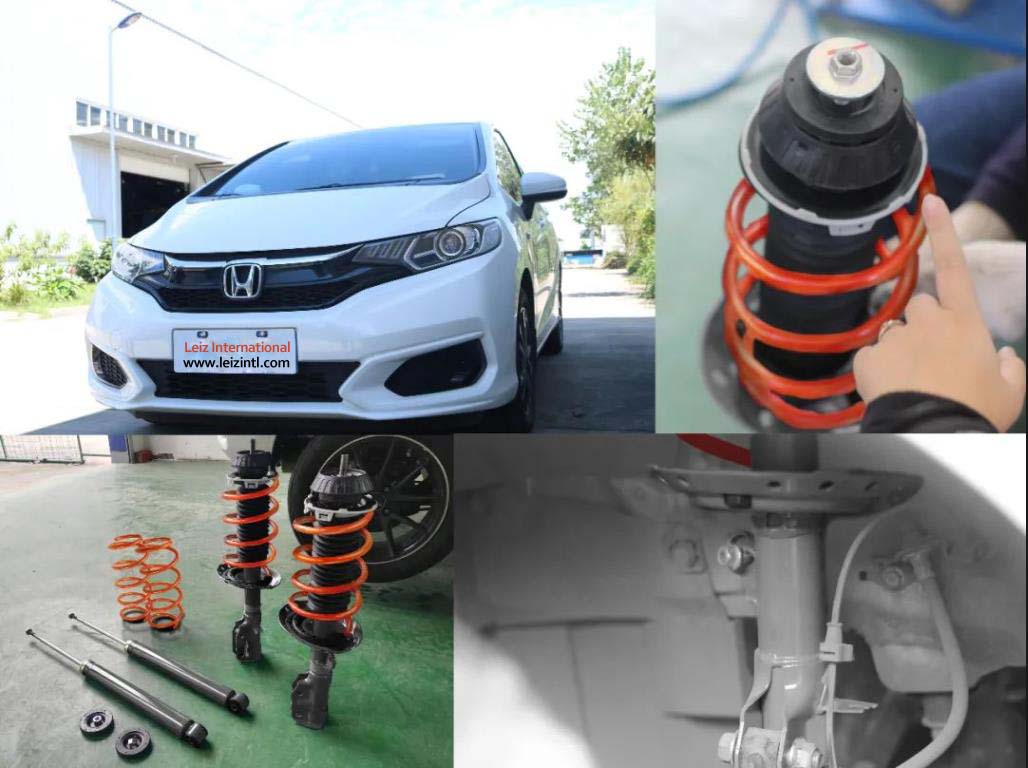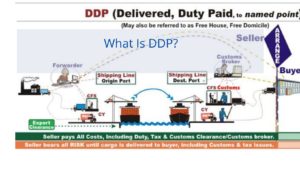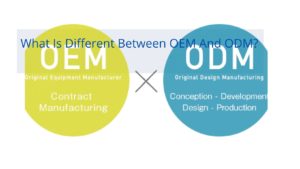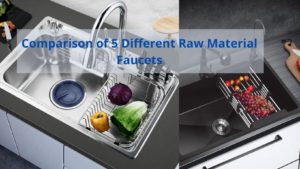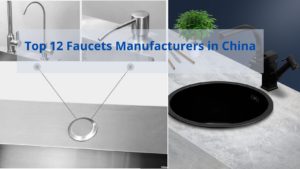Shock Absorber is used to dampen the shock and vibration from the road when the springs rebound after absorbing the shock. They are widely used in cars to accelerate the attenuation of frame and body vibrations in order to improve the smoothness of the ride.
When passing over uneven road surfaces, although the shock absorbing springs filter the vibrations from the road, the springs themselves still have a reciprocating motion and the shock absorbers are used to suppress this spring jump. If the dampers are too soft, the body will jump up and down, and if the dampers are too stiff, they will create too much resistance and prevent the springs from working properly. In the case of suspension modifications, a stiff shock absorber is matched to a stiff spring, which in turn is closely related to the weight of the car, so heavier cars generally have stiffer shock absorbers. A device connected to the shock-absorbing crankshaft to counteract torsional vibrations of the crankshaft (i.e. the phenomenon of the crankshaft being twisted by the impact of the cylinder ignition).

Principle of operation
In order to improve the smoothness of the car, shock absorbers are installed in parallel with the elastic components in the suspension. The oil in the shock absorber cavity will repeatedly flow from one cavity to another through different orifices. At this time, the friction between the pore wall and the oil and the internal friction between the oil molecules form a damping force on the vibration, so that the vibration energy of the car is converted into oil heat energy, which is then absorbed by the shock absorber and distributed to the atmosphere. The damping force increases or decreases with the relative speed of movement between the frame and the axle (or wheel) and is related to the viscosity of the oil when the oil channel cross-section and other factors remain unchanged.
The shock absorber and the elastic element undertake the task of shock mitigation and damping, the damping force is too large, will make the suspension elastic bad, and even make the shock absorber connection damaged. Thus, the contradiction between the elastic element and the shock absorber has to be adjusted.
(1) In the compression stroke (axle and frame are close to each other), the damping force of the shock absorber is smaller in order to give full play to the elasticity of the elastic element and to moderate the impact. At this point, the elastic element plays a major role.
(2) In the suspension extension stroke (axle and frame are far away from each other), the damping force of the shock absorber should be large to damp the shock rapidly.
(3) When the relative speed between the axle (or wheel) and the axle is too large, the shock absorber is required to automatically increase the liquid flow, so that the damping force is always kept within a certain limit to avoid bearing excessive shock loads.
In the car suspension system is widely used in the cartridge shock absorber, and in the compression and extension stroke can play a damping role called two-way action shock absorber, there is a new type of shock absorber, which includes inflatable shock absorber and resistance adjustable shock absorber.
The working principle of bi-directional action cartridge shock absorber is explained: In the compression stroke, it means that the car wheel moves closer to the body and the shock absorber is compressed, at which time the piston in the shock absorber moves downwards. The volume of the lower chamber of the piston decreases, the oil pressure rises and the oil flows through the circulation valve to the chamber above the piston (upper chamber). The upper chamber is partly occupied by the piston rod, so the increased volume of the upper chamber is smaller than the reduced volume of the lower chamber, and part of the oil then pushes open the compression valve and flows back into the reservoir cylinder. The conservation of oil by these valves creates a damping force on the suspension subjected to compressive movement. When the shock absorber is on its extension stroke, the wheel is equivalent to moving away from the body and the shock absorber is stretched. At this point the shock absorber’s piston moves upwards. The oil pressure rises in the upper chamber of the piston, the circulation valve closes and the oil in the upper chamber pushes open the extension valve and flows into the lower chamber. Due to the presence of the piston rod, the oil flowing from the upper chamber is not sufficient to fill the increased volume of the lower chamber, which results in a vacuum in the lower chamber, and the oil in the reservoir cylinder then pushes open the compensation valve 7 to flow into the lower chamber for replenishment. Due to the throttling effect of these valves the suspension is damped during the tensioning movement.
As the spring stiffness and preload of the extension valve is designed to be greater than that of the compression valve, the sum of the channel loading areas of the extension valve and the corresponding normally open gap is less than the sum of the channel cross-sectional areas of the compression valve and the corresponding normally open gap under the same pressure. This makes the damping force generated by the extension stroke of the damper greater than the damping force of the compression stroke and achieves the requirement of rapid damping.
Product usage
To accelerate the attenuation of frame and body vibrations in order to improve the smoothness (comfort) of the car, shock absorbers are fitted inside the suspension system of most cars.
The damping system of a car consists of a spring and a shock absorber together. The dampers are not used to support the weight of the body, but to dampen the shock when the springs absorb the shock and rebound and to absorb the energy of the road impact. The spring acts as a shock absorber, turning a ‘large energy shock’ into a ‘small energy shock’, while the damper gradually reduces the ‘small energy shock’. If you have ever driven a car with a broken damper, you can appreciate the bounce of the car through every pothole and undulation, and it is this bounce that the damper is designed to dampen. Without a damper there would be no control over the spring bounce and the car would bounce badly over rough roads and lose tyre grip and traction when cornering due to the up and down vibration of the springs.
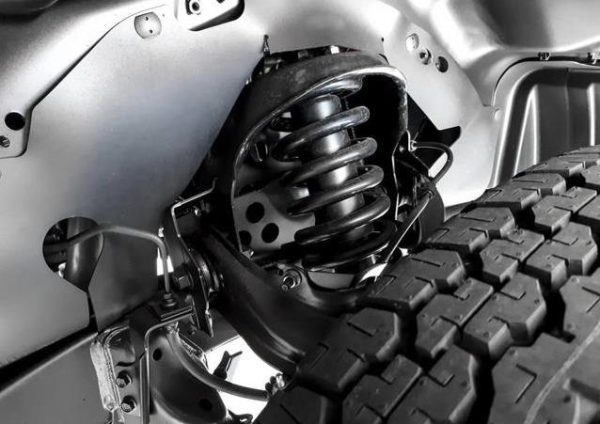
Product classification
Material classification
From the point of view of the material used to produce the damping, there are two main types of shock absorber: hydraulic and pneumatic, and a type of variable damping shock absorber.
Hydraulic
Hydraulic dampers are widely used in automotive suspension systems. The principle is that when the frame and the axle make reciprocating relative movements and the piston moves reciprocally in the cylinder barrel of the shock absorber, the fluid in the shock absorber shell will repeatedly flow from the inner cavity into another inner cavity through some narrow orifices. At this point, the friction between the liquid and the inner wall and the internal friction of the liquid molecules will form a damping force on the vibration.
Inflatable
The gas-filled shock absorber is a new type of shock absorber developed since the 1960s. Its structure is characterised by a floating piston in the lower part of the cylinder barrel, which is filled with high pressure nitrogen in a closed chamber formed by the floating piston and one end of the cylinder barrel. The floating piston is equipped with a large section of O-ring, which separates the oil and gas completely. The working piston is equipped with compression and extension valves that change the cross-sectional area of the passage according to the speed of its movement. When the wheel bounces up and down, the working piston of the shock absorber makes reciprocating movements in the oil, causing a difference in oil pressure between the upper and lower chambers of the working piston, and the pressure oil then pushes open the compression and extension valves and flows back and forth. As a result, the valves produce a large damping force on the pressure oil, which attenuates the vibration.
Structural division
The structure of the damper is a piston rod with a piston inserted into a barrel, which is filled with oil. The piston has throttle holes which allow the oil in the two parts of the space separated by the piston to replenish each other. The smaller the throttle hole, the greater the damping force, and the greater the viscosity of the oil, the greater the damping force. If the size of the throttle hole remains the same, when the shock absorber is working at a fast speed, the damping will affect the absorption of the shock too much. Therefore, a disc-shaped plate spring valve is set at the outlet of the throttle hole. When the pressure becomes large, the valve is jacked open, the throttle hole opening becomes larger and the damping becomes smaller. As the piston moves in both directions, there are plate spring valves on both sides of the piston, called compression and extension valves respectively.
Shock absorbers are divided into single and double cylinders according to their structure. They can be further divided into: 1. Single cartridge air pressure dampers; 2. Double cartridge oil pressure dampers; 3. Double cartridge oil and gas dampers.
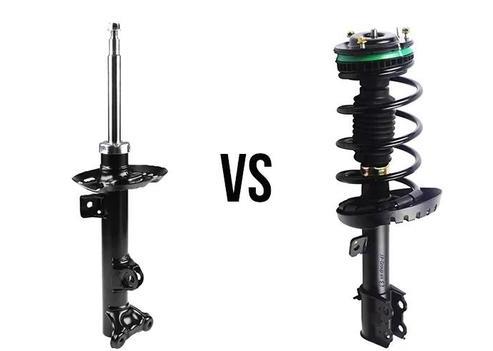
Double Cartridge
The piston moves in the inner cylinder. As the piston rod enters and withdraws, the volume of the oil in the inner cylinder increases and contracts, so that the balance of the oil in the inner cylinder is maintained by exchanging with the outer cylinder. Therefore there are four valves in the double barrel shock absorber, i.e. in addition to the two throttle valves on the piston mentioned above, there are also flow valves and compensation valves installed between the inner and outer barrels to complete the exchange.
Single cartridge type
Compared to the double cylinder type, the single cylinder shock absorber is simple in structure and has one less valve system. It is equipped with a floating piston in the lower part of the cylinder, (floating means that there is no piston rod to control its movement) and a closed gas chamber is formed under the floating piston, filled with high pressure nitrogen. The above mentioned changes in fluid level due to the movement of the piston rod in and out of the fluid are automatically accommodated by the floating piston. In addition to the above
Cartridge shock absorbers
In addition to the two types of damper described above, there is also a resistance adjustable damper. This can be operated externally to change the size of the throttle orifice. More recent vehicles have electronically controlled dampers as standard equipment, where the optimum damping force is calculated by a computer through the detection of driving conditions by sensors and the damping force adjustment mechanism on the shock absorber works automatically.
A specific description of the cartridge damper
This shock absorber is widely used in automotive suspension systems and acts as a dampener in both compression and extension strokes, which is why it is also called a two-way acting shock absorber.
The components include: 1. piston rod; 2. working cylinder; 3. piston; 4. extension valve; 5. reservoir cylinder; 6. compression valve; 7. compensation valve; 8 circulation valve; 9. guide seat; 10. dust cover; 11. oil seal.
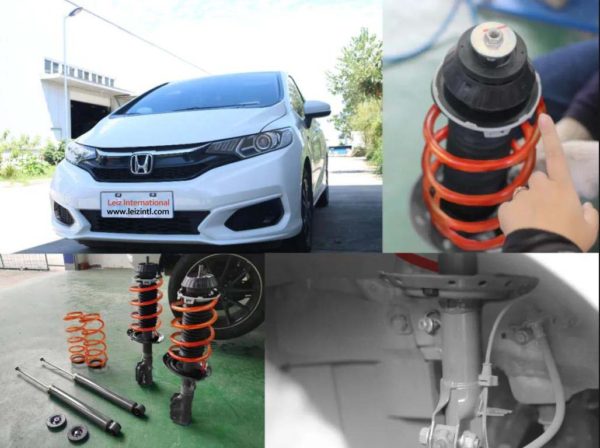
Diagram of the working of the cartridge damper
When the car wheel moves closer to the body and the shock absorber is compressed, the piston inside the shock absorber moves downwards at this time. The volume of the lower chamber of the piston decreases, the oil pressure rises and the oil flows through the circulation valve to the chamber above the piston (upper chamber). The upper chamber is partly occupied by the piston rod, thus the increased volume of the upper chamber is smaller than the reduced volume of the lower chamber, and part of the oil then pushes open the compression valve and flows back into the storage cylinder. The conservation of oil by these valves forms the damping force for the suspension subjected to compressive movement. The shock absorber is stretched as the wheel moves away from the body, when the shock absorber’s piston moves upwards. The oil pressure rises in the upper chamber of the piston, the circulation valve closes and the oil in the upper chamber pushes open the extension valve into the lower chamber. Due to the presence of the piston rod, the oil flowing from the upper chamber is not sufficient to fill the increased volume of the lower chamber, which results in a vacuum in the lower chamber, and the oil in the reservoir cylinder then pushes open the compensation valve to flow into the lower chamber for replenishment. Due to the throttling effect of these valves, the suspension is damped during the extension movement.
Product features
When designing and applying vibration isolators, the following factors must be considered: ① to provide the required amount of vibration isolation; ② to withstand the specified load; ③ to withstand changes in temperature and other environmental conditions (humidity, corrosive fluids, etc.); ④ to have certain vibration isolation characteristics; ⑤ to meet the requirements of the equipment to which the isolator is applied for the weight and volume of the isolator.
When the excitation frequency is lower than the inherent frequency of the spring system, the vibration isolator does not work. When the excitation frequency is similar to the inherent frequency, the vibration is amplified. The excitation frequency is usually two to three times greater than the inherent frequency in order to obtain good vibration isolation. In a viscous damped single degree of freedom vibration isolation system, when damping is ignored, the inherent frequency of the vibration isolator is K. The force of the vibration isolator is the force of the vibration isolator, and m is the total mass of the vibration isolator. When the static compression of the vibration isolator δst is proportional to the load, such as steel springs, the inherent frequency; the unit of δst is m. The inherent frequency of the rubber vibration isolator is often higher than the above equation.
Metal-rubber vibration isolators
The research into metal rubber technology aims to develop an elastic porous material using metal wire as a raw material, using which metal rubber components with special properties can be prepared. Using metal wire as the raw material, metal rubber components do not contain any ordinary rubber, but have the same elasticity and porosity as rubber, and are particularly suitable for solving difficult problems such as damping and vibration damping, filtering, sealing, throttling and noise absorption in environments such as high and low temperatures, large temperature differences, high pressure, high vacuum, strong radiation, severe vibration and corrosion, etc. Various structural shapes can be prepared according to the needs of different working conditions. Moreover, it has the characteristics of long storage and service life, no aging phenomenon, etc. It is the best substitute for ordinary rubber in special working conditions of aerospace, defence weaponry and civilian products.
1、Using metal wire as raw material, it does not contain any ordinary rubber, but has the same elasticity and porosity of rubber.
2、Resistant to high and low temperatures, large temperature differences, high vacuum, strong radiation and corrosive environments.
3、High bearing capacity, fatigue resistance, no ageing phenomenon, long service life and storage time.
4、It can meet the needs of damping, vibration damping, sealing, filtering, throttling and sound absorption and noise reduction, etc. It is the best substitute for ordinary rubber products and other porous material products under special industry and mining.
5, its performance indicators have designability, change different process parameters and methods, can be prepared with different structural dimensions and performance characteristics of metal rubber products.
6、It is suitable for various fields such as aerospace, bullet ship and starship, national defence weaponry, petrochemical industry and automobile industry, etc. It has the distinctive characteristics of both military and civilian use.
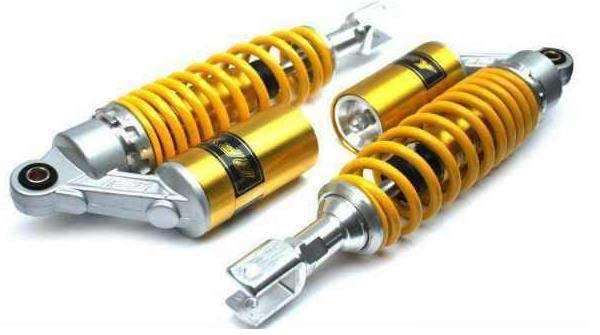
Steel spring vibration isolators
Steel spring vibration isolators can be used for everything from equipment weighing hundreds of tonnes to lightweight precision instruments, usually where the static compression is greater than 5cm or where temperature and other environmental conditions do not allow the use of materials such as rubber. The advantages of this vibration isolator are: ① large static compression, low inherent frequency, low frequency vibration isolation is good; ② resistant to oil, water and solvents, etc. erosion, not affected by temperature changes; ③ will not age or creep; ④ mass production characteristics change very little. The disadvantages are: ① its own damping is very small (damping ratio of about 0.005), so that the resonance rate of transmission is very large; ② high-frequency easy to transmit vibration along the wire; ③ easy to produce wobble movement, and therefore often must be added to the external damping (such as wire, rubber, felt, etc., see Figure 1, b) and inert blocks.
Steel springs are spiral, disc, ring and plate, etc., and spiral springs are the most widely used. Given its intrinsic frequency, the vertical stiffness K (N/m i.e. Newtons per metre) of a single spring is calculated.
Rubber vibration isolators for auto parts
They can be used in cases of shear, compression or tangential compression (Fig. 1, c) and are rarely used in cases of tension. The advantage is that they can be made in a variety of shapes and with different stiffnesses. The internal damping effect is greater than that of steel springs and can be isolated at excitation frequencies down to about 10 Hz. The disadvantages are: they age over time and have a high creep under heavy loads (especially at high temperatures), so they should not be subjected to continuous deformation of more than 10-15% (under pressure) or 25-50% (shear). The inherent frequency of natural rubber is slightly lower than that of synthetic rubber, and its mechanical properties are characterised by small changes, high tensile strength, long elongation when damaged, and low price. Vibration isolation cushions are cork, felt, rubber mat and glass fibre plate, etc. The advantages are: low price, easy to install, and can be cut into the required size and overlap up to use, in order to obtain different degrees of vibration isolation effect.
①Cork: the longest history of vibration isolation materials, usually under pressure, static compression up to 30%, but also will not be lateral projection. The total thickness is 5 to 15 cm, the load is 0.5 to 2.0 kg per cm2 and the damping ratio is about 0.06. The cork is resistant to corrosion and solvents and is not very sensitive to temperature changes. At room temperature, it can last for decades. Cork is usually used for vibration isolation at disturbance frequencies greater than 20 to 30 Hz due to poor low frequency isolation. Carbonised insulated cork made in China has an inherent frequency of about 11 to 33 Hz. The static load and static compression are shown in Figure 2. ② rubber pad: characteristics and rubber vibration isolator similar, but because the volume of rubber in the pressure of compression is very small, only in can lateral projection to compression, so usually made into a shaped plate (Figure 1, d) to allow the horizontal projection and deflection, in order to increase the static compression.
③ Glass fibre board: there are various densities and fibre diameter varieties. The stiffness of this vibration isolation material usually increases with density, fibre diameter and static compression. China uses phenolic resin glass fibre board for insulation, the total thickness is about 5~15 cm when no load is added, the common load is 0.1~0.2 kg force/cm2, the damping ratio is 0.04~0.07, the inherent frequency is 5~10 Hz. Glass fibre panels are resistant to industrial solvents, but will absorb moisture etc. This vibration isolation material is usually used for concrete chassis due to the large bearing area and static compression, and to prevent water and mortar from penetrating during construction and use. It is mainly used for vibration isolation in studios, recording studios, acoustic laboratories and equipment, as well as for vibration isolation of some machines.
④ Felt: its vibration isolation is most effective when it is thick, soft and not subjected to excessive static loads. It is particularly effective in reducing vibration transmission in the sound frequency range due to its high damping factor, which is only four times greater at resonance, combined with its high impedance and mismatch with most engineering materials. Usually used in thicknesses of 10 to 25 mm, when subjected to 0.2 to 7 kg force/cm2 pressure, the inherent frequency is about 20 to 40 Hz, determined by the felt thickness rather than by its area and static load.
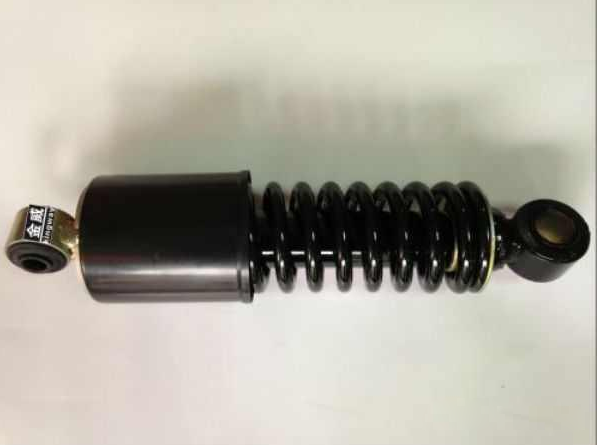
Air cushion vibration isolators
Generally made of inflatable rubber parts, they are more effective than steel springs in isolating vibrations at particularly low frequencies. The inherent frequency can be as low as 0.1 to 5 Hz. It has high damping at resonance and low damping at high frequencies. The disadvantages are: expensive, limited load and frequent checks. The air cushion vibration isolator is divided into two types of unidirectional action and bidirectional action. Figure 3 for a simple, closed air cushion vibration isolator, the inclusion of air stiffness K = γMgA/Vo, the inherent frequency. γ for the specific heat ratio (air for 1.4); A for the air cushion vibration isolator to bear the load area; M and Vo for the inclusion of air mass and volume; g for the acceleration of gravity.
Vibration isolation bases
Machines are sometimes mounted on vibration isolation bases, which are usually constructed of concrete or steel. The use of heavy and rigid inert concrete blocks increases the effective weight of the machine and serves to:
(i) reducing vibration and reducing the effect of unbalanced forces on the machine;
②Increase the force resistance and make the machine firmly mounted;
③Lower the centre of gravity and increase stability;
④Reducing the inherent frequency. The weight of the inert block should be at least equal to the weight of the machine, preferably twice the weight of the machine. Reciprocating engines and compressors, for example, usually require a block 3-5 times the weight of the machine, while lighter machines sometimes require a block weighing up to 10 times the weight of the machine.
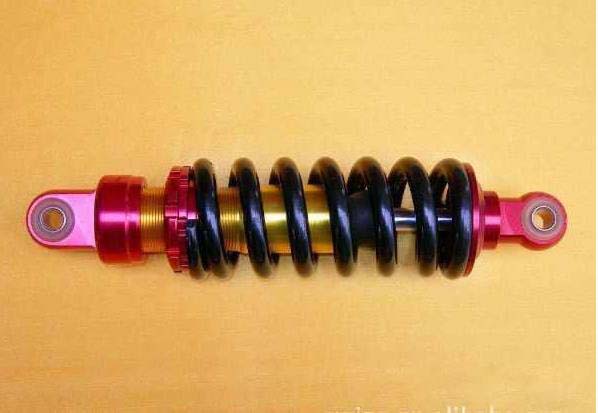
Wire rope dampers
This type of damper can adapt to the strict requirements of modern industry for vibration and shock and noise control technology. It has the advantages of multi-directional elastic deformation, non-linear softening type stiffness, ease of use and storage, and light weight.
Maintenance methods
In order to make the frame and body vibration quickly attenuate, improve the smoothness and comfort of the car driving, the car suspension system is generally equipped with shock absorbers, the car is widely used two-way action cartridge shock absorber.
The shock absorber is a perishable accessory in the process of using the car, the good or bad work of the shock absorber will directly affect the smoothness of the car driving and the life of other parts, so we should make the shock absorber often in good working condition. The following methods can be used to check whether the shock absorber is working well.
1. make the car in poor road conditions on the road after 10km parking, touch the shock absorber shell with your hand, if not hot enough, that the shock absorber internal resistance, shock absorber does not work. At this time, you can add the appropriate lubricant, and then test, if the shell is hot, the shock absorber internal lack of oil, should add sufficient oil otherwise, that the shock absorber failure.
2. Press the bumper hard and then release it, if the car has 2~3 jumps, it means the shock absorber is working well.
3. When the car is driving slowly and emergency braking, if the car vibrates more violently, it means the shock absorber has problems.
4. Remove the shock absorber will be upright, and the lower end of the connecting ring clamped in a vise, pull the pressure damping rod several times, at this time there should be a stable resistance, pull up the resistance should be greater than the resistance to the downward pressure, such as unstable resistance or no resistance, may be a lack of oil or valve parts damage inside the shock absorber, should be repaired or replacement parts.
After determining that the shock absorber is faulty or has failed, the shock absorber should be checked for oil leaks or signs of stale oil leaks.
If the shock absorber is not leaking oil, the bushings should be checked for damage, de-welding, rupture or dislodgement. If the above check is normal, the shock absorber should be further decomposed, check whether the clearance between the piston and cylinder is too large, the cylinder has no strains, whether the valve seal is good, whether the valve flap is tightly fitted with the valve seat, and whether the extension spring of the shock absorber is too soft or broken, according to check the shock absorber connecting pin, connecting rod, connecting hole, rubber, the situation to take the repair and grinding or replacement of the method of repair.
In addition, the shock absorber in the actual use of the failure of the sound, which is mainly due to the shock absorber and steel plate spring, frame or shaft collision, rubber pad damage or fall off and the shock absorber dust cylinder deformation, insufficient oil and other reasons, should identify the causes, be repaired.
After the shock absorber is checked and repaired, it should be tested on a special test bench for working performance. When the resistance frequency is 100±1mm, the resistance of its extension stroke and compression stroke should be in accordance with the regulations, indicating that the shock absorber is basically normal.
Provide by Household products
